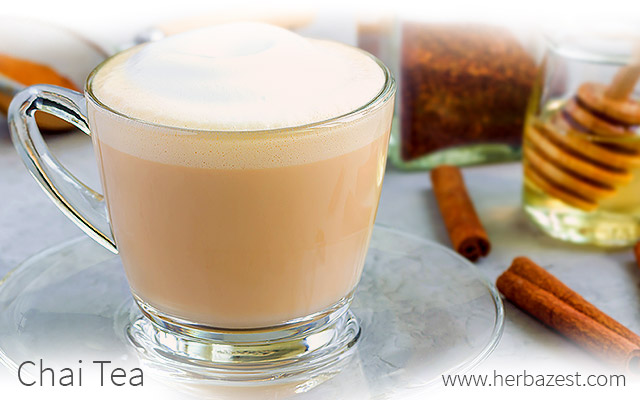With the international expansion of the Indian tea market in the 1900s, some of the original names of certain tea beverages native to India started being slightly misused in Western countries. Such is the case with chai tea, a sweet and aromatic milk tea that is a popular item on the menus around the world.
The Origin of Chai Tea
The large cultivation of tea plant in India was initiated under the British administration, in the 1830s. The Indian people, however, did not find tea leaves particularly attractive, and when Britons put efforts to encourage its consumption among the locals, these finally showed some interest in the British way of brewing and drinking tea -which was black, with milk and a little sugar- and called it chai, which literally means “tea.”
Along the years, Indian people have adjusted the classic black chai tea recipe to their taste preferences: increasing the amount of sugar and adding aromatic spices, such as cinnamon, cloves, anise, cardamom, and ginger. This blend of spices is called masala, so the famous masala chai is essentially tea with milk, sugar, and spices. It became the most favorite tea beverage of the region, commonly sold by street vendors or made at home, and many families in India still pass their masala tea recipes down the generations.
The Expansion of Chai Tea
In the 1960s, the popularity of masala chai gained momentum and spread worldwide, and somehow the names got mixed up. In Western countries, the spiced milk tea is not known by its proper Hindi name, masala chai. Instead, it is referred to as “chai tea,” which is literally translated to “tea tea.” To add to the confusion, plain tea with milk, without the spices, is also occasionally called chai tea. However, generally ordering chai tea at the coffee or tea shop in the West is unanimously considered as asking for milk tea with spices.
Because of its warming spices and cozy aroma, chai tea is one of the most frequently ordered beverages worldwide, especially in the cooler months of autumn and winter. Its popularity has led to the creation of chai tea latte, which is made by adding the concentrated masala spices to steamed milk, and is often topped with heavy cream.
Chai Tea Recipe
Though finding chai tea at the local coffee shops is quite easy today, making it at home is also simple, as well as fun and cost-effective. The necessary ingredients include:
- 1 tea bag or one tablespoon of loose leaf black tea
- 1 cup (240 mL) of milk
- 1 cup (240 mL) of water
- Sugar to taste
- 1 tablespoon of masala blend (usually ginger, cardamom, and cinnamon), although a blend of aromatic herbs including allspice is often a good replacement used in the West.
The preparation takes only a few minutes: the spices, along with milk and water, are brought to a boil in a pot, then reduced to simmer. Next, loose tea leaves or a tea bag are immersed in the liquid and simmered for five minutes. Finally, sugar is added, and the mixture is ready to be strained and served. The chai tea can be garnished with ground cinnamon or nuts, such a pistachios or almonds.
Sources
- Chai, Chai Recipes
- Chai: The Spice Tea of India, pp. 9-20, 21-25, 87-103
- New World Encyclopedia, Masala Chai
- The Book of Tea: Growing it, making it, drinking it, the history, recipes and lots more




